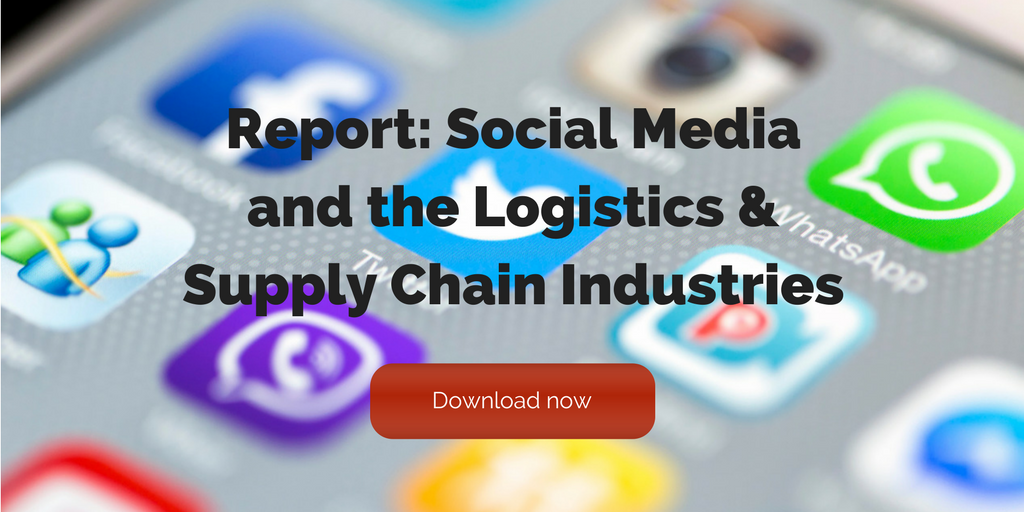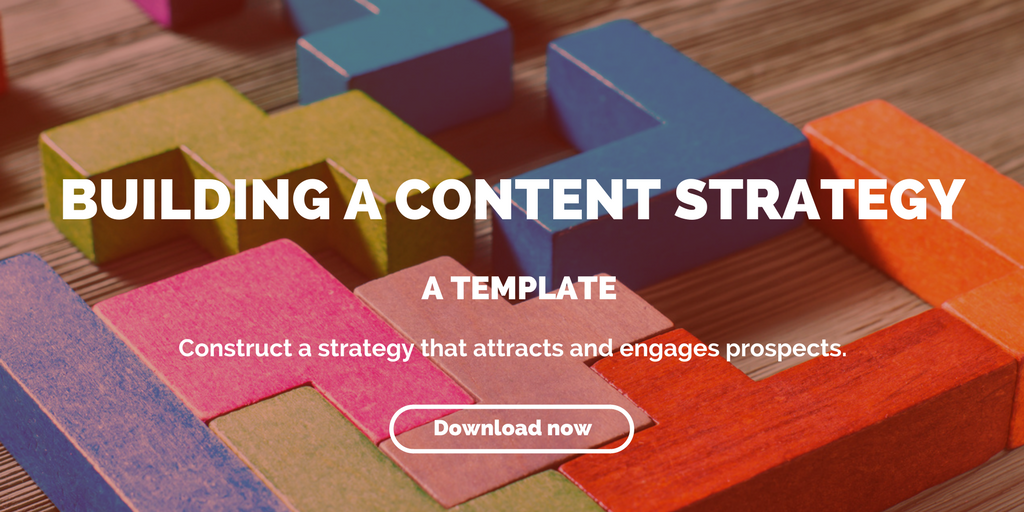
by Fronetics | Apr 30, 2018 | Blog, Content Marketing, Current Events, Marketing, Social Media
Also in social media news April 2018: Instagram shuts down API platform, LinkedIn’s updates aimed at helping B2B marketers, and Facebook expands split ad testing.
Facebook has been busy creating updates focused on user security in the wake of the Cambridge/Analytica scandal. Since the data breach, Facebook CEO Mark Zuckerberg has committed to protecting user’s information and outlined several initiatives in the works to “prevent abuse, protect personal data and privacy, improve security, and take down fake accounts.”
One of the key takeaways from the scandal has been the lack of regulations overseeing business practices, as it applies to user data. It is safe to say that new regulations are looming in the not-so-distant future.
[bctt tweet=”“Computer science is undergoing a ‘reckoning’ and an ‘ethics crisis’ not unlike what has happened in chemistry with dynamite, in physics with nuclear bombs, and in human biology with eugenics.” Yonatan Zunger” username=”Fronetics”]
Google engineer Yonatan Zunger wrote in the Boston Globe, “Computer science is undergoing a ‘reckoning’ and an ‘ethics crisis’ not unlike what has happened in chemistry with dynamite, in physics with nuclear bombs, and in human biology with eugenics.” These regulations could have major impacts for advertisers, who have been capitalizing on data collected by social media platforms. Regulations that limit the tracking and retaining of user data will especially affect target advertising that relies on capturing data from target audience users.
Fronetics is staying on top of these changes and will continue to provide social media recommendations and updates on regulations.
Here’s your social media news for April 2018.
Facebook Changes Include More Transparency Around Ads and Pages
Facebook is working to make important changes that are aimed at increasing transparency and authenticity. “By increasing transparency around ads and Pages on Facebook, we can increase accountability for advertisers — improving our service for everyone,” says Rob Goldman, VP, Ads, and Alex Himel, VP, Local & Pages, in a statement on Facebook’s website.
Last October the social media giant rolled out restrictions on electoral ads on Facebook and Instagram. This April, Facebook is expanding those restrictions to all “issue ads” — for example, political topics — so only authorized advertisers that have been approved by Facebook can run issue ads. These changes are aimed at preventing any additional user data and privacy issues.
Facebook is also enforcing a verification process for all admins managing pages with large numbers of followers. “Those who manage large Pages that do not clear the process will no longer be able to post. This will make it much harder for people to administer a Page using a fake account, which is strictly against our policies.”
YouTube Introduces TrueView Ads
YouTube’s new ad format, TrueView for Reach, is its latest update aimed at boosting engagement for advertisers. The format allows advertisers the ability to build ads from 6 to 30 seconds long, with the skip option available after 5 seconds. “Our six-second bumper ads were designed to drive more reach among the audiences you care about, especially as they become increasingly on-the-go. They showcase not only the fun of storytelling in six seconds, but also the benefits of adapting to consumer behavior,” posts Ali Miller, Product Manager, Video Ads, and Khushbu Rathi, Product Manager, Video Ad for YouTube.
Facebook Improves and Expands Ad Split Testing Capabilities
Last October Facebook gave advertisers the ability to create split tests in Ads Manager’s Guided Creation workflow. The new update this month allows users to create tests in Quick Creation flow, making it even easier to manage ads in bulk and test ads against one another. Quick Creation will also feature a dashboard that shows “standard KPIs for the ads in your split test, such as CPM, CPC, CTR and more, to inform your marketing strategy.”
Instagram Cuts Off Older API Platform
In light of Facebook’s data security issues, Instagram announced it is shutting down the API platform, effective immediately. They have also greatly reduced the amount of data developers can access per hour, dropping from 5,000 calls per hour to only 200. Tech Crunch reports Facebook’s bold action to reform its APIs shows it’s willing to prioritize users above developers — at least once pushed by public backlash and internal strife.
LinkedIn Rolls Out Native Video for Sponsored Content and Company Pages
LinkedIn introduced autoplaying native video ads that will appear in the news feed section as stand-alone posts, as well as the ability to include native video on a company page for businesses and publishers. These changes were developed to help B2B marketers grab the attention of their audiences and increase engagement. “While video is a proven and popular tactic to engage decision-makers, the challenge has been finding a quality environment in which to reach them.” The update will be available to all businesses in the next few weeks.
Twitter Expands its Official Partners Program
Back in 2015, Twitter introduced its Official Partner Program, a select set of companies aimed at helping brands increase their ROI on advertising, brand awareness, and scaling customer care. The program has been so successful, Twitter announced it’s expanding the program to include six new partners: Curalate, Jebbit, VidMob, Vidsy, Animoto, and Social Native. “Each provider offers a unique solution that expands the advertisers’ toolset and delivers high-quality creative for brands on Twitter.”
Related posts:


by Fronetics | Apr 2, 2018 | Blog, Content Marketing, Logistics, Marketing, Social Media, Supply Chain
If you’re looking to increase your brand awareness, and quickly, here are 10 tricks to accelerate your efforts.
If you took Psychology 101 in school (or even if you didn’t), you know that people are more likely to buy from brand names they’re familiar with than those they don’t know. This goes for purchasing things like medicine, and for procuring components or parts as part of the supply chain.
That’s why so many of our clients come to us looking to build brand awareness as one of their main goals. They want to customers to know about them — and sooner rather than later.
Particularly if your business is new, you’re trying to change an existing market perception, or you have to make your marketing dollars work fast to meet a boss’ deadline, you need to grow brand awareness quickly. We’ve got some ideas to accelerate your efforts.
10 tricks to grow brand awareness quickly
1) Instagram Stories
Instagram Stories is an on-trend platform that delivers targeted content to B2B buyers and builds brand awareness with potential customers. This feature consists of sequences of content that a user posts over a 24-hour period. Besides photos, Stories can include video and Boomerangs, seconds-long motion clips that play forwards and backwards.
2) Partner with other brands
Creating a promotional partnership with a brand that is ancillary to your role in the supply chain can be a huge boost to your brand awareness, if you choose wisely in your partnership. You benefit from its image and reputation and build collegiality.
3) Start content partnerships
Again, this is all about leveraging other people’s audiences to spread the word about your brand. Reach out to the blogs or media sites your target buyers frequent to see if you can author a post for them. Invite them to guest author on your blog. Basically, create two-way content partnerships where you will ensure that your brand’s name will come across the screens of target buyers.
4) Make sharing easy
This is a great way to let your successes go to work for you. Make it easy for your audience and followers to share your content with their networks. Give them sharing options for email, social media — heck, put share links on anything and everything. Social media is a powerful tool in building your brand. Don’t underuse it.
5) Hold social media contests
Everybody loves to win a contest. Use your social media platforms to create contests in which followers submit a photo or video, and let other users vote for their favorites. Contestants will share the link with their networks, and your brand awareness grows exponentially.
6) Try paid social advertising
Facebook and Twitter ads are relatively cheap, and both platforms do a great job of making sure your content gets to your target audience. You can set metrics and customize your preferences for a targeted audience in a variety of ways. It’s one of the most effective ways to grow brand awareness quickly with a very particular audience, though you have to pay to play.
7) Infographics
These are eye-catching and colorful ways to display interesting data and statistics, and are often overlooked for the content powerhouses they are. They’re prime candidates to be shared far and wide on social media.
8) Personality
Having a memorable personality for your brand isn’t just for B2C companies. While you don’t need to hire the Old Spice Guy, letting your content have a voice and perspective is important. Buyers want to know they’re dealing with a human being.
9) Podcasts
Starting your own industry podcast, perhaps interviewing your own executives and other industry experts, is a great way to build your brand and simultaneously develop relationships with your supply chain peers.
10) Become a resource
We’ve said it before and we’ll say it again: Your most important asset is your knowledge and expertise, not your products and services. Content marketing is all about being a trusted resource for your audience. Ditch the blatant sales pitch in your content and think about how you can help your target buyers instead.
How do you grow brand awareness quickly?
Related posts:


by Fronetics | Mar 7, 2018 | Blog, Content Marketing, Logistics, Marketing, Social Media, Strategy, Supply Chain
Linkless backlinks, or mentions of your business without a hyperlink to your webpage, are now a more effective way to improve your ranking with search engines.
For years Google has used backlinks to rank webpages. Backlinks are any link on another website that points (or links) back to your website. Unfortunately, search engines began to use backlinks as a bit of a popularity contest: The more you had, the more popular your website became.
Businesses quickly understood the loophole in search engines’ algorithms. They could buy, influence or even create relationships with other industry businesses for the sole benefit of getting links to their websites. It didn’t take long for search engines to catch on.
Google has spent years reworking the way it ranks backlinks and trying to penalize brands that pay for or create free links through unethical relationships. But where does that leave the rest of us that are working to create high-quality content in hopes of increasing our SEO rankings?
Linkless backlinks are the future of SEO rankings
You might be asking yourself what is a linkless backlink? Good question.
Linkless backlinks are mentions of your business or brand without a hyperlink to your webpage. In a keynote speech in September 2017, Gary Illyes, a webmaster trend analyst for Google, said:
“Basically, if you publish high-quality content that is highly cited on the internet — and I’m not talking about just links, but also mentions on social networks and people talking about your branding — then you are doing great.”
It all comes down to mentions of your brand on reputable websites. And I don’t just mean backlinks to your webpage. Other sites’ tweeting about your products or mentioning you on their Facebook News Feed can all lead to increased rankings on Google and other search engines. Sounds easy, right?
How to make linkless backlinks work for you
The principles that help you gain backlinks are still true for gaining linkless backlinks. You want to focus on creating the most accurate, high-quality content you can. Create videos and infographics for your website to add visual appeal. And collaborate with other industry leaders to reach new audiences.
But there are a few other tips you can use to help boost your SEO ranking with linkless backlinks.
3 tips for building a strategy for linkless backlinks
1. Work to increase brand awareness and reputation
The foundation of linkless mentions is reputation building. Search engines are looking for authentic mentions of products and brands in content that helps build authority around an industry topic.
Increase your brand awareness by growing your social media presence, by encouraging followers and loyal customers to write online reviews of your products and services, and by participating in collaborative content marketing.
2. Track brand awareness and mentions
You’re working hard to create content that has a far reach across many platforms. It’s a key step in gaining exposure among potential customers and earning new business. This process is called brand awareness, the extent to which consumers are familiar with your brand. And for linkless backlinks, it’s imperative that you’re tracking all of your brand mentions, not just links.
There are several tools to help you track brand mentions online. Here at Fronetics, we prefer the ease of Google Alerts, which sends you a message when someone mentions your brand online. We also use Hootsuite, with which you can track brand mentions, as well as keywords and phrases, across all of your social media platforms.
3. Stay on top of negative mentions
Blog comment sections and social media channels offer an open avenue for customers to discuss their thoughts about your company for all the world to see. And, unfortunately, one negative comment can be infinitely louder than one hundred positive ones. The potential impact it could have on business is scary.
But that doesn’t mean you should delete or ignore every unfavorable brand mention. In fact, companies can use negative online comments as an opportunity to exhibit top-notch customer service and much-appreciated transparency in the way they do business.
Be diligent in monitoring brand mentions and respond quickly to resolve any issues that arise. Responding promptly and effectively to negative feedback online shows your commitment to customer service and transparency.
The art of SEO building is a tough craft to master. As algorithms evolve, it’s important for brands to stay aware of these changes and focus on what they can do to help boost their rankings.
The more buzz around your brand, the better your ranking will be. So make sure you’re utilizing all the different ways to help boost your SEO ranking, including linkless backlinks.
Need more help with SEO? We’ve done the research, so you don’t have to. Have a look.
Related posts:


by Fronetics | Mar 5, 2018 | Blog, Current Events, Logistics, Supply Chain
Companies looking to promote their supply chain transparency should consider joining the Green Supply Chain Map to reach environmentally conscious buyers.
Earlier this year, the U.S. Natural Resources Defense Council (NRDC) and the Institute of Public & Environmental Affairs (IPE) created the world’s first map publicly linking multinational corporations to their suppliers’ environmental performance. This Green Supply Chain Map shows companies’ commitment to supply chain transparency and environmental management. It will allow customers to make buying choices based on commitment to environmental sustainability.
The IPE calls the map “a leadership initiative dedicated to showcasing brands’ commitment to supply chain transparency and environmental management. It openly links brands’ supplier lists to publicly available environmental data, including real-time data for air emissions and wastewater discharge.”
Supply chain transparency, mapped
Publication of the Green Supply Chain Map is a breakthrough in transparency in the supply chain.
“The map has the potential to become a true game-changer for public environmental oversight and improvement efforts for industrial manufacturing in China,” says Ma Jun, environmentalist and director at IPE. “We hope to see more brands step up their game and join the map to connect the missing dots of accountability in the vast network of global supply chains.”
Six brands have so far joined and disclosed supplier data: Esprit, Gap, Inditex, New Balance, Puma, and Target.
The map allows users to filter by brand and to view the supply chains for individual companies. It displays water, air, and weather conditions in a factory’s location, as well as the air and wastewater pollutants each factory releases.
How brands can leverage this map
Interested brands can join the map voluntarily, demonstrating their leadership in supply chain transparency and environmental sustainability. The map’s interface allows businesses to verify and advertise their environmental compliance. It’s a potential way to attract business, as more and more savvy and environmentally conscious buyers will use this tool to make purchasing decisions.
“Until now, customers have lacked effective tools to assess the environmental impact of their favorite brands’ global operations,” says Linda Greer, senior health scientist for NRDC and founder of its Clean by Design green supply chain program. “These companies that have stepped up to put their names first on the inaugural map are showing new levels of transparency on their manufacturing abroad and are demonstrating real leadership in supply chain responsibility.”
Other companies hoping to demonstrate their supply chain transparency should consider adding their brands to the map as part of a holistic strategy to attract environmentally conscious buyers.
The future
The Green Supply Chain Map may be the first of its kind. But with the increasing availability of such data, we anticipate like organizations — or even brands themselves — will soon have similar tools for illustrating supply chain transparency.
“We hope our map can serve as a reference for other countries and regions facing similar concerns about environmental impacts of rapid industrialization within their own borders,” says Kate Logan, the IPE’s green choice outreach director.
How does your organization demonstrate supply chain transparency?
Related posts:


by Jennifer Hart Yim | Feb 28, 2018 | Blog, Leadership, Logistics, Marketing, Social Media, Supply Chain
For busy executives, being active on social media is kind of like networking. It’s one of those things that everyone says you absolutely have to do to benefit your career, but it’s hard to make it part of your daily routine.
This guest post comes to us from Argentus Supply Chain Recruiting, a boutique recruitment firm specializing in Supply Chain Management and Procurement.
Let’s be honest: it’s even harder for those who came of age before social media became ubiquitous. It can be tough to pin down what channels you should be on, what you should be posting, and the specific ways that a strong social media presence will bolster your career.
Supply Chain Management and its related functions (Procurement, Planning, Vendor Management, Logistics, Operations) are on the opposite end of the spectrum from functions like sales and marketing – areas where your brand is everything.
But from our perspective, there are still lots of different benefits that Supply Chain and Procurement executives can gain from building their social media brands:
- The most obvious – and relevant to a recruitment company like Argentus – is that having a strong presence on social media makes you a more attractive candidate for employers and recruiters.
- Social media activity can help position you as a thought leader in your industry, which can help connect you with new possible suppliers and strategic partners that you can bring into your Supply Chain. This is just as valuable as leads that a Sales professional might gain from being active on social media.
- Being a thought leader raises your profile in a job search, but it can also raise your profile within your company. If you feel stuck or siloed in a certain function, it can give you the opportunity to speak out about other topics within Supply Chain and Procurement. It can lead to increased responsibility and more leverage when it comes to promotions and salary increases.
- If you’re an executive (let’s say Senior Director, VP, and C-Suite), you’re a voice for your company. You can help raise the company’s profile as an employer. This is huge for attracting talent – which is a major difficulty for companies in this tight job market that favours candidates.
With all that in mind, how do you actually gain these benefits? Here are a few tips:
1. Think about goals.
How many of us have heard, “you should really get active on social, it can help your brand,” then signed up for a service, half-heartedly used it for a week and a half, and quit?
It’s important to be strategic about why you’re using social media to help further your career and brand. Are you looking to move into a new job? Are you aiming to connect with possible suppliers and partners? Are you trying to help your company seem like an awesome place to work? Are you going to offer thought leadership to be seen as an expert in the industry and widen your horizon?
When you’ve set concrete goals, it’s much easier to figure out which social media activity is going to be most effective when building your brand.
2. Streamline your channels.
This follows on the previous point. It’s easy to adopt a shotgun approach and sign up for – or resuscitate – your accounts on Twitter, LinkedIn, Facebook, Instagram, YouTube, and all the rest. But it’s best to pick one or at most two channels based on your goals. LinkedIn is always a good pick for networking and personal branding – check out what we’ve done with LinkedIn Publisher. It’s also, obviously, the best tool if you’re in the hunt for a new job and want to network with peers, recruiters and hiring managers.
Twitter is the still the best channel for industry news, whether you’re commenting on it or having conversations about it. Facebook and Instagram are more personal networks, so have less value for your professional career, but if you’re already comfortable on those platforms they can be useful places to be active. Some fields like Procurement have dedicated social media networks (we happen to really like Procurious), which will help you connect with people in the field and share best practices.
One other thing to consider is video. It’s more time – and possibly cost – intensive, but many executives have used YouTube, Vimeo or LinkedIn native video to speak about industry topics and build their personal brands. You might have to develop your video skills (modern smartphones can take videos with more than acceptable quality) or even hire outside video producers, but video has great engagement, so it can be well worth it.
3. Brand yourself.
Once you’ve chosen your channel or channels, you want to focus on creating a professional brand that resonates. This can sound intimidating, but often it just amounts to putting that little extra bit of “polish” into your social media profiles. Upload high quality pictures, include examples of your work or presentations that you’ve done. Think about your niche and the expertise you have to contribute.
4. Develop content.
The next step is to post on your chosen channels regularly. If you’re on LinkedIn or Twitter, seek out connections and follow people and publications that are active in Supply Chain and Procurement.
Picture your social media feed as a place to develop content that might be interesting to other professionals in the field. This is something that a lot of people struggle with, but it’s not too difficult once you get the hang of it. The best way to start is to re-post interesting articles with a comment. Say you’ve seen a great article about technology in Supply Planning: share it, and comment on how your organization does it. After you’ve developed a rhythm, make a quick post asking your network for best practices. Solicit advice. Shine a spotlight on people in your network or company. Make a comment on Supply Chain trends. What’s a big story in the news that has implications for how organizations manage Supply Chain or Procurement? There are so many angles, and once you get active you start seeing more. Writing out your opinions about, say, Strategic Sourcing, might actually help you discover new ideas you didn’t have before.
5. Focus on engagement rather than just numbers.
The return on investment for time spent developing a personal brand isn’t always obvious. Things to pay attention to are new followers, connection requests, or mentions. But numbers aren’t everything. Take it from us: if you’re a consistent voice on your chosen channels, people are often paying attention even if they aren’t “liking” every post. Lots of people are surprised when someone brings up their posts in conversation months later – even if that person has never given any online indication that they’re reading. The key is to focus on quality of engagement rather than quantity of views or other metrics.
Even though it’s quite a buzzword, a strong personal brand is a major asset to any executive or aspiring executive. It doesn’t have to be a chore. It can actually become an illuminating part of your work routine, and it pays off. We hope these tips are useful even if you’ve been active on social media in a professional capacity before!
Related posts:

SaveSave









